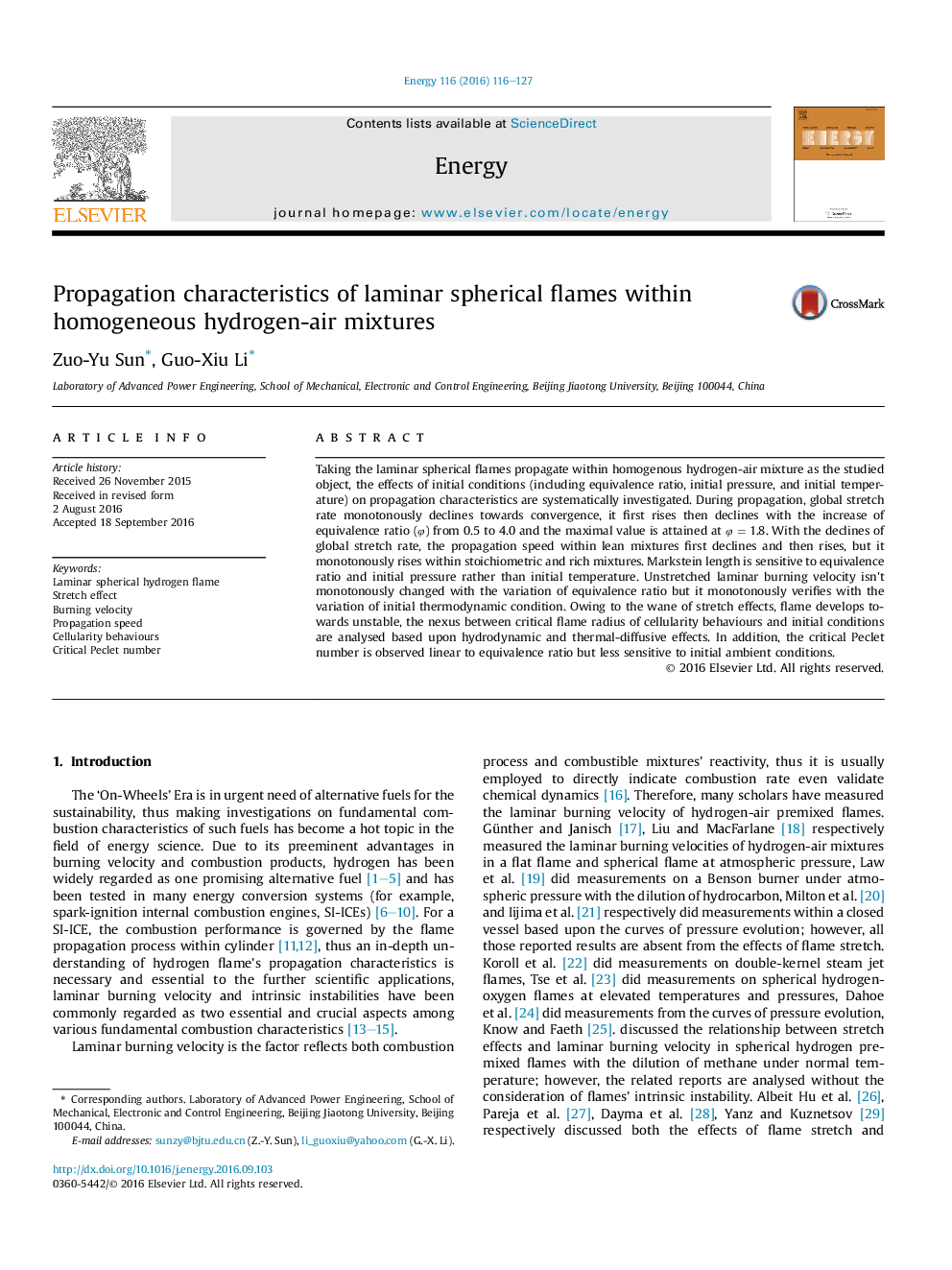| Article ID | Journal | Published Year | Pages | File Type |
|---|---|---|---|---|
| 5477275 | Energy | 2016 | 12 Pages |
Abstract
Taking the laminar spherical flames propagate within homogenous hydrogen-air mixture as the studied object, the effects of initial conditions (including equivalence ratio, initial pressure, and initial temperature) on propagation characteristics are systematically investigated. During propagation, global stretch rate monotonously declines towards convergence, it first rises then declines with the increase of equivalence ratio (Ï) from 0.5 to 4.0 and the maximal value is attained at ÏÂ =Â 1.8. With the declines of global stretch rate, the propagation speed within lean mixtures first declines and then rises, but it monotonously rises within stoichiometric and rich mixtures. Markstein length is sensitive to equivalence ratio and initial pressure rather than initial temperature. Unstretched laminar burning velocity isn't monotonously changed with the variation of equivalence ratio but it monotonously verifies with the variation of initial thermodynamic condition. Owing to the wane of stretch effects, flame develops towards unstable, the nexus between critical flame radius of cellularity behaviours and initial conditions are analysed based upon hydrodynamic and thermal-diffusive effects. In addition, the critical Peclet number is observed linear to equivalence ratio but less sensitive to initial ambient conditions.
Keywords
Related Topics
Physical Sciences and Engineering
Energy
Energy (General)
Authors
Zuo-Yu Sun, Guo-Xiu Li,
